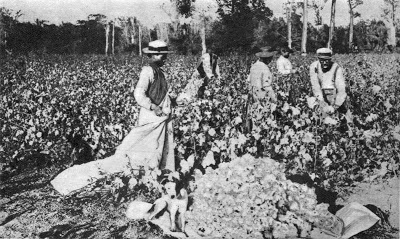The Tuskegee Syphilis Experiment that lasted from 1932 until 1972 is often cited as an example of blatant racism displayed by the establishment in general and the medical establishment in particular.
It must be emphasised that the purpose of this article is not to deny that racism was an integral part of the attitudes held by those who conducted and condoned the study, which it clearly was. Instead, its purpose is to expose the real nature of the tragedy that occurred.
We have demonstrated in a number of our articles, as well as in detail in our book, What Really Makes You Ill? Why Everything You Thought You Knew About Disease Is Wrong, that there is no evidence that any ‘germ’ is the cause of any disease and that no disease is sexually transmitted, which inevitably includes syphilis. This therefore raises serious questions about the Tuskegee experiment; questions that inspired us to investigate the matter further.
The basic premise of the experiment was to study the progress and complications of ‘untreated’ syphilis in African-American men. The reason for the study was that there existed a belief amongst members of the American medical establishment that syphilis affected African-Americans differently than European-Americans. At the time the study was being considered, the early 1930s, segregation was still in existence and continued until 1964, although slavery had been abolished in 1865.
Other than their unfounded views about the differences between African-Americans and European-Americans, physicians in America generally held the same views as physicians in Europe about diseases and their causes, as well as appropriate treatments. The view of syphilis that prevailed in 1932 persists into the present day and can be summarised as follows:
- Syphilis is caused by a bacterium called Treponema palladium, which was discovered in 1905
- The disease is either congenital or it is transmitted sexually
- There are 3 stages of the disease
- Tests can be used to diagnose the disease
- Treatments are available to cure the disease.
The 3 stages are called the primary, secondary and tertiary stages, which are described on the Mayo Clinic web page entitled Syphilis. The primary stage is said to involve small sores or ulcers that usually clear on their own; the Mayo Clinic page states that,
“The sore appears at the spot where the bacteria entered your body.”
The second stage is claimed to involve symptoms that may include a rash, fever and swollen glands, to name just a few. However, it is claimed that if not treated this stage can be followed by a ‘latent’ period, in which there are no symptoms, and that this may last for years or it may develop into the late or ‘tertiary’ stage. At this latter stage the disease is claimed to affect a variety of organs, including the brain, nerves, eyes, heart, blood vessels, liver, bones and joints. The Mayo Clinic page states that,
“These problems may occur many years after the original, untreated infection.”
The test used to diagnose syphilis in the 1930s was the Wassermann test, which is no longer used. The Mayo Clinic web page describes the tests that are currently used to diagnose syphilis and states that,
“Blood tests can confirm the presence of antibodies that the body uses to fight infection.”
This is clearly an indirect test, but, as we explain in our earlier article about antibodies as well as in our book, the function of antibodies within the body is completely misunderstood by the medical establishment.
The treatments for syphilis used in the 1930s, which will be discussed later in this article, are not the same as those used in 2020; but none of them are actually able to ‘cure’ any disease.
The prevailing beliefs in the early 20th century were that African-Americans had a different susceptibility to certain diseases and that they had a strong sexual impulse. These were mere beliefs that have never been found to have any evidence to support them. Nevertheless, these beliefs were prevalent when the American medical establishment decided to study the rise of ‘syphilis’ in the early 20th century and to increase their efforts to control it in order to improve public health. This led to increased testing of people in various parts of the country, which in turn led to the discovery that Macon County had a particularly high incidence of positive test results that suggested a high incidence of syphilis. However, as discussed in our book, the Wassermann test was extremely unreliable and could often produce positive test results for a variety of other conditions; a positive test result was clearly not exclusive to syphilis nor did it provide definitive proof that a person suffered from syphilis.

The efforts of the US health department to improve health by providing treatment to people diagnosed with syphilis at that time were severely hampered by the Great Depression, but the lack of funds to administer ‘treatment’ to everyone found to have the disease provided American physicians with an opportunity to ‘study’ untreated syphilis.
The details of the study and how the 600 men were recruited are discussed in depth by James H Jones in his book entitled Bad Blood, but these details are not necessary for an understanding of the real problems. The men were divided into 2 groups, one of which comprised 399 men who were claimed to be syphilitic and a second group that comprised 201 men who were claimed to be syphilis-free. It should be noted that none of these men were healthy, but their status, with respect to ‘syphilis’ was based on their Wassermann test results.
The major criticism of the Tuskegee study is that the men were left ‘untreated’; but, according to James Jones, the men all received some ‘treatment’ in the early days of the study. It was later claimed that the study had been contaminated because the men were partially treated, rather than completely ‘untreated’. However, the standard treatment for syphilis in the early 1930s involved arsenical compounds, known as arsphenamine and neoarsphenamine, in combination with mercury pills or bismuth. These are all highly toxic substances that cannot ‘cure’ any disease; they certainly would have exacerbated the ill-health problems with which the men were already suffering. By being ‘denied’ treatment, the men were in fact, spared the adverse health effects that they would have suffered had they received the full doses of the toxic drugs claimed to ‘cure’ the disease.
Some of the official criticisms of the study are therefore invalid, but certain criticisms are valid and these are that the men were not informed of the purposes of the study and that they did not therefore give their informed consent.
Another official criticism of the study is that the men remained untreated after the discovery of penicillin in the 1940s and its widespread use for ‘bacterial diseases’ soon afterwards, and that they were thereby denied the opportunity to be cured. This too is invalid because, again as we discuss in our book, penicillin does not ‘cure’ disease, nor does any other type of antibiotic.
It is clear therefore, that failing to treat the men was not the cause of their health problems, because their illnesses were not due to an infection with a bacterium that is sexually transmitted.
Although the exact nature and causes of the health problems that each of the men suffered cannot be known, there is ample evidence to be able to discuss some of the most likely contributory causal factors.

The whole of America was affected by the Great Depression, but certain areas, such as Alabama that was already economically depressed, were more severely affected. This situation applied most notably to Macon County whose economy relied mainly on cotton grown by sharecroppers, most of whom were poor African-Americans who, according to James Jones,
“…eked out a bare existence on small plots of land.”
This situation continued into the 1970s.
Poverty always coexists with poor health and poor living conditions and the conditions in Macon County were no exception, as James Jones also explains,
“In the hinterland around Tuskegee, the county seat, housing conditions were terrible. The typical dwelling was a tumble-down shack with a dirt floor, no screens, little furniture, a few rags for bedding, and a privy only when underbrush was not nearby. Drinking water came from an uncovered, shallow well, often totally unprotected from direct surface drainage.”
He continues,
“The people who lived in this rural slum ate a pellagrous diet.”
He further describes the nature of this poor diet,
“Salt pork, hominy grits, cornbread, and molasses formed the standard fare of the majority of Macon County’s black residents, while fresh meat, fresh vegetables and fruits, or milk (even for families with infants) seldom appeared on their tables.”
Although we would dispute some of the aspects of the ‘good diet’ described by James Jones, the main point to emphasise is that the poor sharecroppers did not have a nutritious diet, a significant factor that would have contributed to their poor health, as he states,
“The health of black people in Macon County was so poor that practically everyone suffered from some illness.”
This point is extremely significant, because even though the men in the ‘control group’ were claimed not to have ‘syphilis’, they were almost certainly unhealthy.

Another highly significant factor that would have contributed to the men’s ill-health was the use of pesticides on the cotton crops, especially arsenic-based sprays. According to an article entitled The Development of Cotton from the Old World to Alabama, in 1920,
“Paris green (copper acetoarsenite) used unsuccessfully to control boll weevils in Alabama; calcium arsenate dust became the principal pesticide used on cotton by 1930.”
These pesticides are also discussed in an article entitled A is for Arsenic (pesticides, if you please) that states,
“In the early 20th century – enthusiastically supported by the U.S. government – the most popular pesticides were arsenic compounds. How popular? In the year 1929, almost 30 million pounds of lead arsenate and calcium arsenate were spread across this country’s fields and orchards.”
The article adds that,
“The residues of lead arsenate and calcium arsenate still haunt us, tainting acres of farmland still in use today. Scientists say that a major source of inorganic arsenic in rice from the American southeast is from pesticide residues, seeping from lands once used to raise cotton. During the early 20th century, calcium arsenate was the number one pesticide used by growers to fight the cotton boll weevil.”
The sharecroppers were therefore exposed to chemicals that are recognised to be highly toxic. It should be noted that arsenic is known to affect the heart, lungs, skin, kidneys and liver, which are also some of the main organs that ‘tertiary syphilis’ is said to affect.
Calcium arsenate was replaced by DDT in the late 1940s; but DDT, which is an organochlorine, is far from benign and would certainly have been yet another significant factor in the ongoing health problems suffered by the sharecroppers.
A further factor that may have contributed to their health problems are vaccines, especially the smallpox vaccine, which is falsely claimed to have been the reason that smallpox was eradicated, including in America. Eleanor McBean explains the adverse effects of the vaccine in her book entitled Swine Flu Exposé, in which she states that,
“Many vaccines also cause other diseases besides the one for which they are given. For instance, smallpox vaccine often causes syphilis, paralysis, leprosy, and cancer.”
It is not stated whether the men in the Tuskegee study were vaccinated against smallpox at any time during its 40-year period, but if they had received vaccines, this would have added to their worsening health problems.
It is clear that the men diagnosed with ‘syphilis’, as well as those who did not receive that diagnosis, were ill, but it should be equally clear from the foregoing that they were not ill with a disease that was caused by a sexually-transmitted infectious bacterium.
The poor health of the men who participated in the Tuskegee study can be almost entirely explained by their poor diet, their poor living conditions and their exposures to highly toxic agricultural chemicals, as well as the initial doses of the highly toxic drugs they received at the beginning of the study.
It is abundantly clear therefore that their health would not have improved had the men received the ‘full’ treatment. But this does not absolve the physicians who failed to ‘treat’ them, because they failed to help the men be restored to health, which is, after all, the core purpose of a healthcare system; or at least that is what its core purpose ought to be. The real problem, as we have discussed at length in our book, lies with the fundamental theories on which almost the entirety of modern medicine is based because they are fatally flawed.
The Tuskegee Syphilis Experiment was certainly a tragedy, although, as this article has shown, not for the reasons usually ascribed to it. It is, however, a searing indictment of the medical establishment and its utter failure to be a ‘healthcare system’.
By adhering to unproven and demonstrably false theories about disease, medicines and the human body, the medical establishment has failed, and continues to fail, humanity. The words of Voltaire remain as true in the early 21st century as they were in the 18th century,
“Doctors are men who prescribe medicines of which they know little, to cure diseases of which they know less, in human beings of whom they know nothing.”
Dawn Lester
19th October 2020
References:
BOOKS
JONES, J H – Bad Blood
LESTER, D. & Parker D. – What Really Makes You Ill? Why Everything You Thought You Knew About Disease Is Wrong
MCBEAN, E – Swine Flu Exposé
ARTICLES
Syphilis – symptoms and causes
https://www.mayoclinic.org/diseases-conditions/syphilis/symptoms-causes/syc-20351756
The Development of Cotton from the Old World to Alabama
https://aurora.auburn.edu/bitstream/handle/11200/4049/AGRO0286.pdf
A is for Arsenic (pesticides, if you please)
https://www.wired.com/2012/06/arsenic-pesticides-in-our-food/
